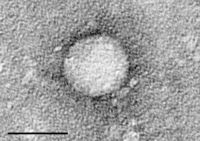
Coexposure of Cyclopiazonic Acid with Aflatoxin B1 Involved in Disrupting Amino Acid Metabolism and Redox Homeostasis Causing Synergistic Toxic Effects in Hepatocyte Spheroids.
Sign Up to like & getrecommendations! Published in 2022 at "Journal of agricultural and food chemistry"
DOI: 10.1021/acs.jafc.2c01608
Abstract: Cyclopiazonic acid (CPA), an emerging toxin, has been found in various foods such as corn, peanuts, and figs. Aspergillus flavus can produce CPA, leading to coexposure with highly toxic aflatoxin B1 (AFB1), but the mechanism… read more here.
Keywords: hepatocyte spheroids; cpa; metabolism; toxic effects ... See more keywords

Tethered primary hepatocyte spheroids on polystyrene multi-well plates for high-throughput drug safety testing
Sign Up to like & getrecommendations! Published in 2020 at "Scientific Reports"
DOI: 10.1038/s41598-020-61699-4
Abstract: Hepatocyte spheroids are useful models for mimicking liver phenotypes in vitro because of their three-dimensionality. However, the lack of a biomaterial platform which allows the facile manipulation of spheroid cultures on a large scale severely… read more here.
Keywords: well plates; throughput drug; hepatocyte spheroids; polystyrene ... See more keywords

Cold storage of porcine hepatocyte spheroids for spheroid bioartificial liver
Sign Up to like & getrecommendations! Published in 2019 at "Xenotransplantation"
DOI: 10.1111/xen.12512
Abstract: Cell‐based therapies for liver disease such as bioartificial liver rely on a large quantity and high quality of hepatocytes. Cold storage was previously shown to be a better way to preserve the viability and functionality… read more here.
Keywords: storage; bioartificial liver; hepatocyte spheroids; porcine hepatocyte ... See more keywords

Hepatotoxicity of copper sulfide nanoparticles towards hepatocyte spheroids using a novel multi-concave agarose chip method.
Sign Up to like & getrecommendations! Published in 2021 at "Nanomedicine"
DOI: 10.2217/nnm-2021-0011
Abstract: Aim: To explore the hepatotoxicity of copper sulfide nanoparticles (CuSNPs) toward hepatocyte spheroids. Materials & methods: Other than the traditional agarose method to generate hepatocyte spheroids, we developed a multi-concave agarose chip (MCAC) method to investigate… read more here.
Keywords: copper sulfide; hepatotoxicity copper; method; hepatocyte spheroids ... See more keywords

Primary Human Hepatocyte Spheroids as Tools to Study the Hepatotoxic Potential of Non-Pharmaceutical Chemicals
Sign Up to like & getrecommendations! Published in 2021 at "International Journal of Molecular Sciences"
DOI: 10.3390/ijms222011005
Abstract: Drug-induced liver injury, including cholestasis, is an important clinical issue and economic burden for pharmaceutical industry and healthcare systems. However, human-relevant in vitro information on the ability of other types of chemicals to induce cholestatic… read more here.
Keywords: potential non; human hepatocyte; non pharmaceutical; hepatocyte spheroids ... See more keywords